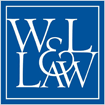
Abstract
Over the past two decades, social media has dramatically changed the way people communicate. With the increased popularity of virtual communication, online speech has, in many ways, blurred the boundaries for where and when speech begins and ends. The distinction between on campus and off campus student speech has become particularly murky given the normalization of virtual learning environments as a result of the COVID 19 pandemic. In Tinker v. Des Moines Independent Community School District, the Supreme Court clarified that students retain their First Amendment rights on campus but that schools may sanction speech that materially and substantially disrupts or interferes with school activities. However, prior to 2021, the Court had never directly addressed whether a school’s capacity to sanction speech extended off campus. This changed with Mahanoy Area School District v. B. L., where the Court implemented a heightened Tinker standard for off campus speech, indicating some hesitation to extend school authority to cyberspace.
As monumental as the decision is, it is unlikely that Mahanoy will do much to safeguard professional students’ First Amendment rights. In the fifty years following Tinker, the Supreme Court has consistently denied certiorari in cases involving professional student speech, whether on or off campus. In the absence of such guidance, appellate courts have struggled with how and to what extent to apply Tinker and its progeny to professional programs. This has led to inconsistent judicial approaches—almost all favoring universities—that provide professional students with little guidance or reassurance in the strength of their constitutional rights.
This Note argues that courts have failed to protect professional students’ First Amendment speech rights, both on and off campus. The method by which appellate courts have analyzed and applied these doctrines suggests that bad facts are creating bad, or at least incomplete, law. By carefully examining student speech doctrines before exploring professional student speech decisions, this Note asserts that appellate courts have performed relatively cursory reviews of Tinker and its progeny, resulting in misrepresentations of the Supreme Court’s precedent. However, this Note proposes that this is an avoidable outcome that careful, rhetorical analysis of Supreme Court precedent can rectify. When properly analyzed, student speech doctrines should provide a sufficient basis to reliably evaluate professional student speech, so long as courts consider the special characteristics of the professional school environment.
Recommended Citation
Shanelle Doher, Silencing Students: How Courts Have Failed to Protect Professional Students’ First Amendment Speech Rights, 80 Wash. & Lee L. Rev. Online 247 (2023), https://scholarlycommons.law.wlu.edu/wlulr-online/vol80/iss5/2
Included in
Constitutional Law Commons, Education Law Commons, First Amendment Commons, Supreme Court of the United States Commons
